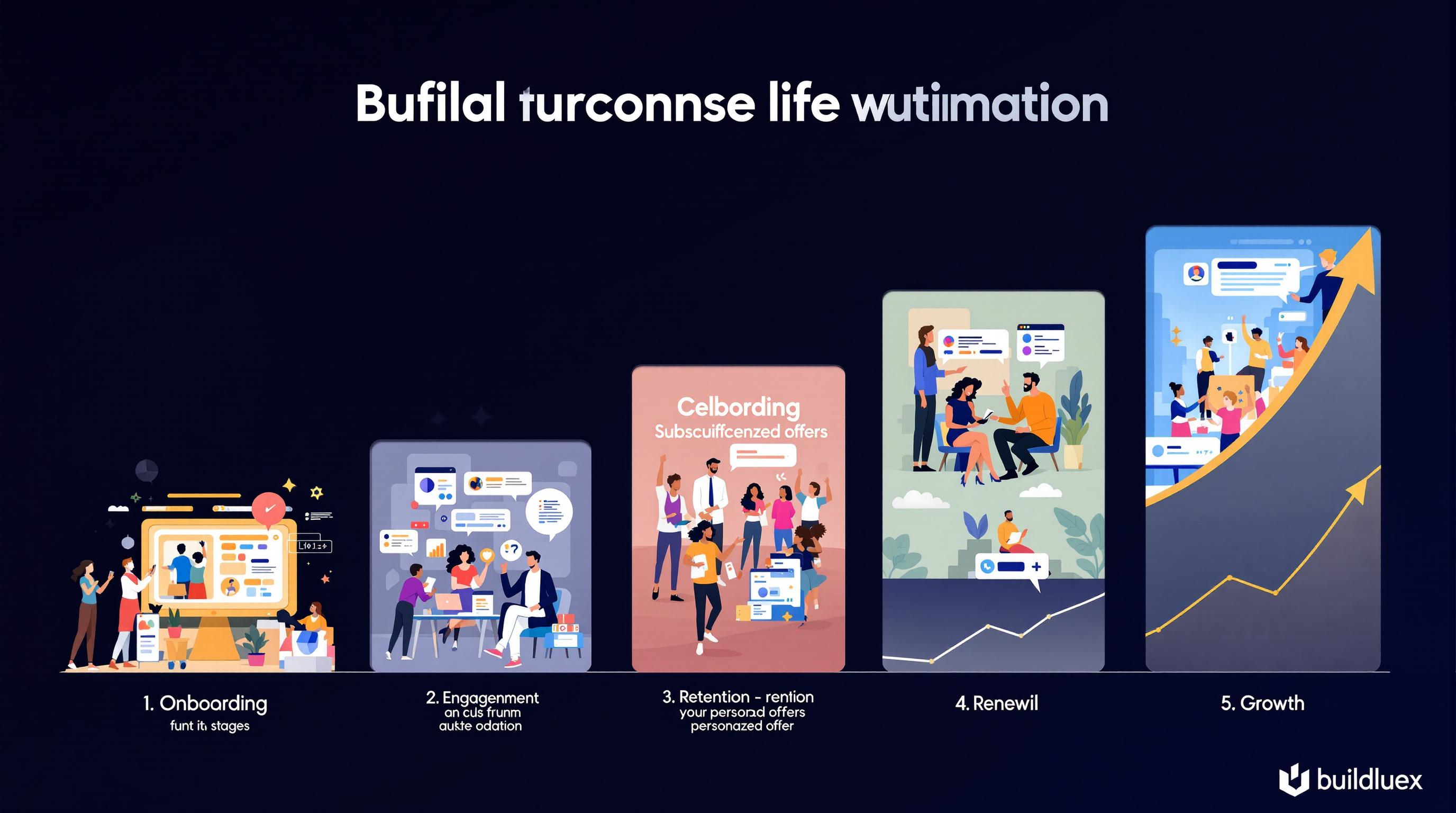Struggling to keep your subscribers engaged? Choosing between freemium and tiered membership models can make or break your retention strategy. Here's a quick breakdown:
- Freemium Models: Offer free basic features to attract users, with optional paid upgrades. Great for fast user growth but can lead to high churn if free users don't convert.
- Tiered Memberships: Provide multiple pricing levels with increasing value. Ideal for stable revenue but risks churn if upgrades feel forced or unclear.
Quick Comparison
| Aspect | Freemium Model | Tiered Membership |
|---|---|---|
| User Acquisition | Easy to attract with free entry | Accessible to a range of budgets |
| Revenue | Lower upfront, grows as users upgrade | Higher upfront but depends on tier alignment |
| Key Risks | Free users may never convert | Users may feel stuck or face upgrade friction |
| Retention Focus | Engage free-tier users, highlight upgrades | Ensure value at each tier, smooth transitions |
To reduce churn:
- Freemium: Keep free users engaged, offer logical upgrade paths.
- Tiered: Clearly define tier benefits, simplify upgrades.
Both models succeed when tailored to user behavior and market needs.
Freemium Models: Core Elements and Churn Risks
Freemium Model Basics
Freemium models provide users with free access to basic features while offering optional paid upgrades. The challenge is striking the right balance - ensuring the free tier offers enough value to attract and retain users, while making premium features appealing enough to encourage upgrades.
Why Users Leave Freemium Products
Users often stop using freemium products when the free version doesn’t offer enough value to keep them engaged. If the gap between free and paid options feels too wide, it can also push users away.
Freemium Impact on Customer Retention
Keeping users engaged requires regular updates and clear communication about premium benefits. The success of a freemium model depends heavily on how it’s executed and how well it matches user behavior and expectations.
Freemium Benefits and Drawbacks
| Aspect | Benefits | Drawbacks |
|---|---|---|
| User Acquisition | Easy to attract users - low commitment required | Non-converting users can strain resources |
| Engagement | Encourages regular use and familiarity | Many users may stick with free features only |
| Conversion | Allows for data-driven prompts to upgrade | High costs if many free users don’t convert |
| Long-term Value | Premium users can become loyal advocates | Supporting free users can stretch infrastructure |
To reduce churn in freemium models, it’s critical to:
- Offer enough value in the free tier to keep users interested
- Provide clear and logical upgrade paths that meet user needs
- Continuously analyze user behavior to spot early signs of churn
- Use targeted strategies to retain users based on their activity patterns
These principles lay the groundwork for comparing freemium models with tiered membership approaches.
Tiered Membership: Setup and Retention Issues
Tiered Membership Basics
Tiered membership models provide multiple pricing levels, each offering a set of features that build upon the previous tier. The basic tier typically includes fundamental tools, while premium tiers add more advanced options. The key to success lies in clearly defining the value at each level, ensuring customers see a reason to pay more for higher tiers. However, this structure also brings unique challenges when it comes to keeping users engaged and satisfied.
Common Tiered Model Problems
Tiered membership models can sometimes lead to customer dissatisfaction or churn due to the following issues:
- Value Gap Perception: Users may feel the tiers don't align with their specific needs, leaving them stuck between options.
- Feature Distribution: Uneven distribution of features across tiers can cause dissatisfaction, especially if essential tools are locked behind higher tiers.
- Price-Value Misalignment: If the price jump between tiers isn't matched by a clear increase in value, customers may hesitate to upgrade.
- Upgrade Friction: Complicated or unclear processes for upgrading can discourage users from moving to higher tiers.
Tiered Model Effects on Retention
Retention in tiered pricing models depends heavily on how customers perceive value at their current tier. To minimize churn, businesses need to regularly review how users interact with the features at each level and gather feedback to address any pain points. Unlike freemium models, tiered systems also require close attention to how users transition between levels. Monitoring these shifts helps identify stagnation or dissatisfaction early.
Tiered Model Benefits and Drawbacks
Here's a look at the pros and cons of tiered membership models:
| Aspect | Benefits | Drawbacks |
|---|---|---|
| Price Flexibility | Makes memberships accessible to a wide range of budgets | Too many options can overwhelm potential customers |
| Feature Access | Provides a clear path for users with evolving needs | Higher tiers risk becoming cluttered with unnecessary features |
| Customer Segmentation | Allows for tailored offerings to different user groups | Users may feel restricted by tier limitations |
| Revenue Optimization | Increases average revenue per user (ARPU) through upgrades | Managing complex pricing structures can be challenging |
| Growth Potential | Encourages upgrades as user needs grow | Some customers may feel pressured to upgrade unnecessarily |
To make tiered membership models work effectively and reduce churn, companies should focus on the following:
- Continuously analyze usage patterns within each tier.
- Clearly communicate the benefits of each tier to users.
- Provide easy and flexible options for upgrading or downgrading.
- Offer strong customer support for all tiers to ensure satisfaction.
Customer Retention Methods for Both Models
Turning Free Users into Paying Customers
To keep users engaged and convert free users into paying customers, it's essential to understand their behavior and tailor strategies accordingly. Here are some effective approaches:
- Feature Gating: Use data to identify which features users engage with most. Restrict access to premium features and encourage upgrades by highlighting their value.
- Personalized Campaigns: Leverage AI to create customized onboarding experiences and send targeted messages that align with user needs.
- Showcasing Value: Provide timely insights and prompts to demonstrate how upgrading unlocks more benefits.
These strategies not only drive conversions but also help maintain satisfaction across all pricing tiers.
Keeping Customers Across Price Tiers
Retaining customers at every pricing level is just as important as converting free users. Here’s how businesses can ensure long-term loyalty:
- Assign dedicated support teams to high-tier customers to address their needs and build trust.
- Use AI tools to monitor customer behavior and recommend upgrades when appropriate.
- Offer automated training to help users make the most of the product.
- Regularly review and refine tier options to stay aligned with customer expectations.
Key Focus Areas for Retention
To strengthen retention efforts across both free and paid models, companies should prioritize the following:
-
Highlighting Value
Host workshops or training sessions to educate users about product features. Share success stories from other customers and use tools like ROI calculators to demonstrate the benefits of upgrading. -
Streamlining Upgrades
Make transitions between pricing tiers seamless. Offer flexible options for both upgrading and downgrading to suit user preferences. -
Sustaining Engagement
Schedule regular check-ins with high-value customers. Monitor usage patterns and send timely reminders or recommendations tailored to their behavior.
Using AI-powered retention tools can also help businesses detect early signs of churn. Research from The B2B Ecosystem shows that these tools enable timely interventions, improving overall retention rates.
The key to success lies in balancing incentives to upgrade with ensuring users remain satisfied at every stage of their journey.
sbb-itb-01010c0
Model Comparison: Freemium vs. Tiered
Best Uses for Each Model
Freemium models are ideal for products where adding new users doesn’t significantly increase costs and where viral growth is a key driver. Offering free trials helps attract a wide audience. On the other hand, tiered membership models work best for services that require more resources or personalized support. Clear service levels in these models make it easier to target different customer groups and justify premium pricing.
Customer Value Over Time
Freemium models often start with lower revenue per user but can deliver strong lifetime value as users upgrade over time. The gradual conversion of free users helps build lasting customer relationships. Tiered models, however, focus on generating revenue upfront by offering premium services that meet customer needs right away. These differences in value creation lead to distinct patterns in customer retention, which we’ll discuss next.
Customer Retention Results
Retention outcomes highlight the contrasts between these models. Freemium strategies are great for attracting large, diverse audiences but often face challenges in converting free users to paying customers. Tiered models, by contrast, usually see more stable revenue early in the customer journey but may experience higher churn if customers feel the service doesn’t meet their evolving needs.
Key factors influencing success include:
- Implementation Costs: Tiered models require more investment, while freemium models lower the barrier to entry.
- User Acquisition: Freemium strategies drive rapid user growth with free trials.
- Support Needs: Services requiring high-touch support are better suited for tiered models.
- Market Type: Established markets often align with tiered models, while freemium works well in newer markets where educating users is crucial.
Research shows that adapting retention strategies to fit customer behavior and market conditions is essential. Companies continuously refine their approach to balance growth and retention effectively.
Pricing Strategies for Freemium and Subscription-based Services
Conclusion
Let’s recap the key strategies for retaining customers, based on the earlier breakdown of freemium and tiered subscription models.
Main Points for Subscription Businesses
The choice between freemium and tiered models directly impacts how you approach retention. Freemium models are great for attracting a large audience quickly, while tiered memberships offer steadier revenue and clear upgrade opportunities.
To reduce churn, each model requires a tailored approach. Freemium models thrive by keeping free-tier users engaged and showcasing premium features. Tiered memberships succeed when there’s a clear distinction between levels and smooth upgrade processes.
These strategies are essential for building retention plans that fit the specific model.
Customer Retention Success Factors
Retention strategies need to align with the subscription model:
For freemium models:
- Keep an eye on user engagement to spot early churn risks.
- Highlight the advantages of premium features.
- Offer upgrade opportunities during times of high activity.
For tiered memberships:
- Clearly define the perks of each tier.
- Provide support that matches the expectations of each level.
- Make upgrades as smooth as possible for the user.
Both models can improve retention by using customer feedback and analyzing usage data to refine features. Companies should also consider their market position, acquisition costs, and support capacity when deciding on a model. This alignment ensures steady growth while keeping churn in check.


